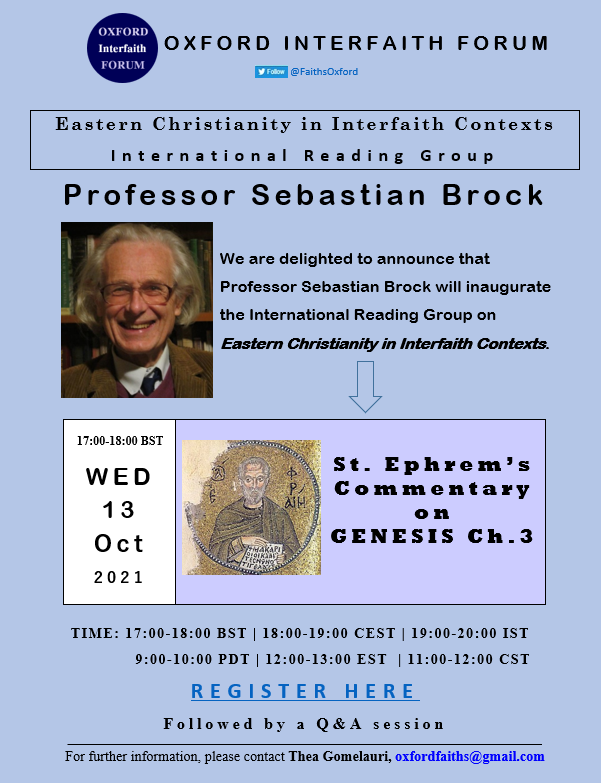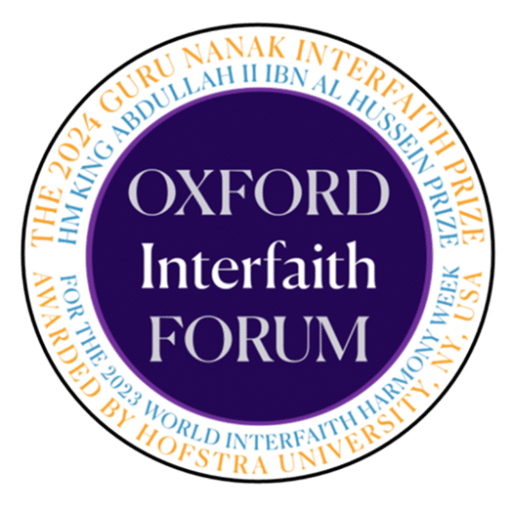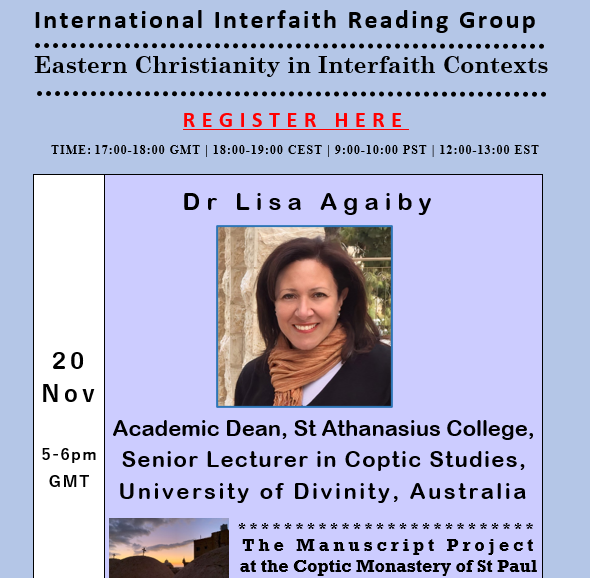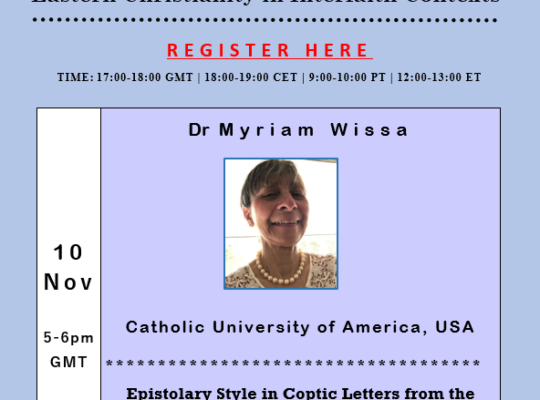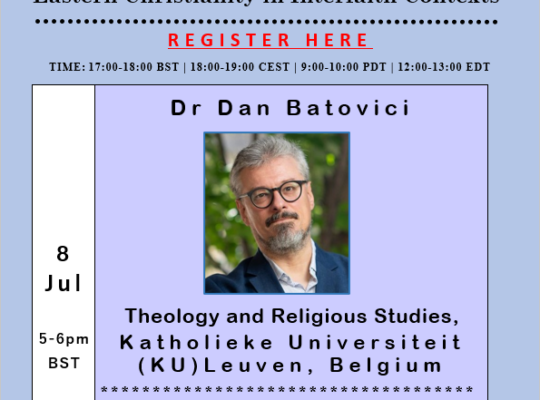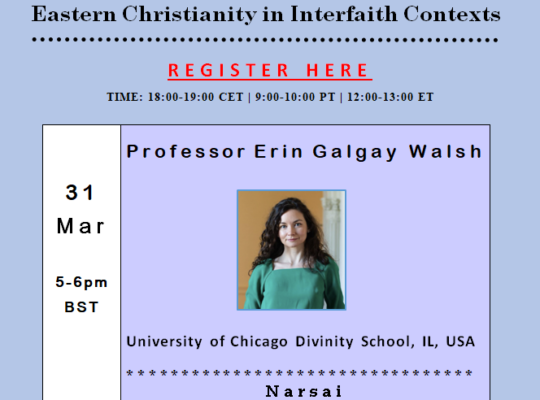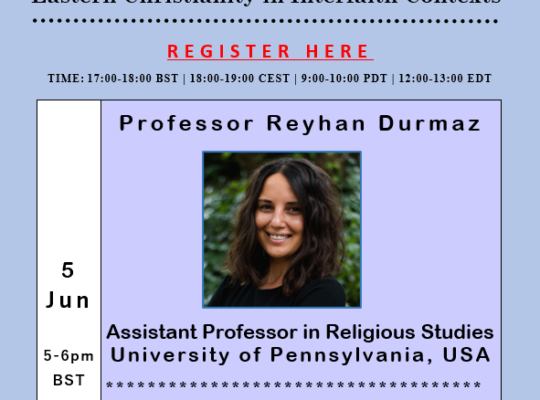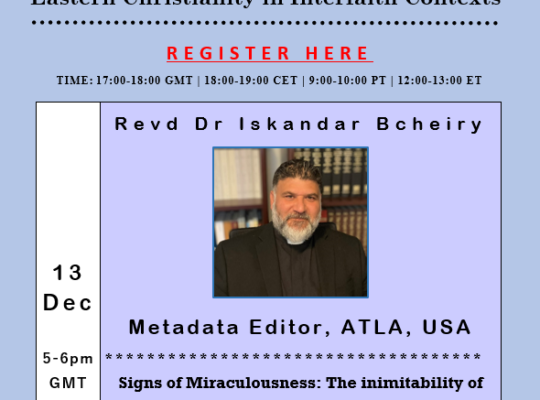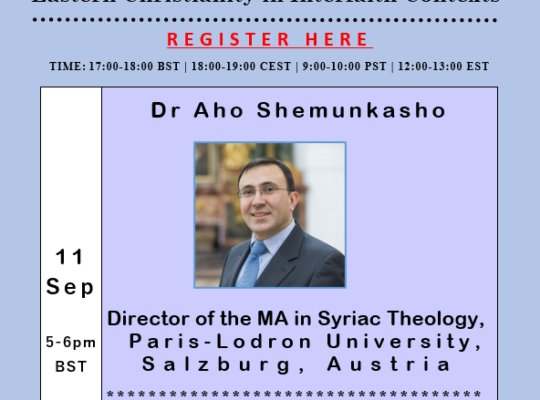20 November, 2023
We are deeply honoured to welcome Dr Lisa Agaiby, Academic Dean at St Athanasius College, and Senior Lecturer in Coptic Studies at the University of Divinity, Australia, to lead the Eastern Christianity in Interfaith Contexts Reading Group.
Here are the details of this fascinating presentation.
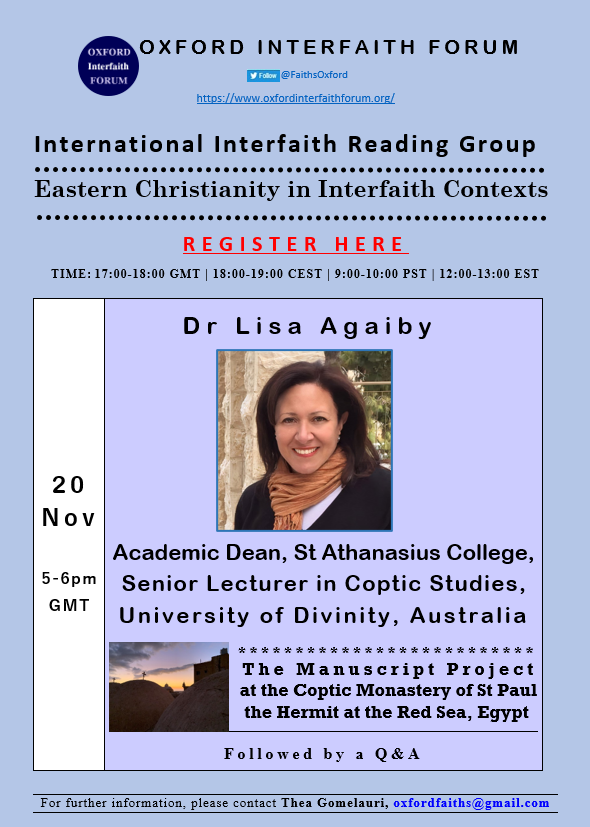

Title: The Manuscript Project at the Coptic Monastery of St Paul the Hermit at the Red Sea, Egypt
Abstract: St Paul the Hermit (c. 228-341) has had a compelling lure on the imaginations of Christians from Late Antiquity to the present day. Identified through the centuries as the first Christian hermit, Paul is believed to have lived most of his long life in a cave in the Egyptian desert near the Red Sea. In time, his hermitage became the core of a monastic settlement that has existed continuously for almost two millennia and bears material witness to sustained devotion to the saint in the form of multiple phases of expansion, wall paintings, liturgical furnishings, and a wealth of precious manuscripts. Since 2018, and in cooperation with the Monastery of St Paul, an Australian team has been working to digitise and document the invaluable manuscript collection. This paper presents the goals and progress of the project to date.
Speaker: Dr Lisa Agaiby, the Academic Dean and Senior Lecturer at St Athanasius College, University of Divinity, Melbourne, Australia.
Speaker’s biography: Dr Agaiby received a Ph.D. from Macquarie University, Sydney Australia, and a Ph.D. from the University of Göttingen, Germany. Her areas of interest include Christianity in Late Antique, Early Egyptian Monasticism, Coptic Archaeology, and Christian-Arabic Studies. Her latest publications include: Lisa Agaiby and Tim Vivian (2021, Nov.) Door of the Wilderness: The Greek, Coptic, and Copto-Arabic Sayings of St. Antony of Egypt (Leiden: Brill); Lisa Agaiby, Mark N. Swanson, and Nelly Van Doorn-Harder eds. (2021). The Proceedings of St Athanasius College’s International Symposium of Coptic Studies: “Copts in Modernity” 13 to 16 July 2018 (Leiden: Brill); and Elizabeth (Lisa) Agaiby (2018) The Arabic Life of Antony attributed to Serapion of Thmuis. Cultural Memory Reinterpreted (Leiden: Brill). She is currently leading a project to digitise and catalogue the entire collection of manuscripts at the ancient Coptic Monastery of St Paul the Hermit at the Red Sea, Egypt.
At St Athanasius College, Lisa teaches the following units: ‘Uncovering the Past: An Archaeology of Christian Egypt’; ‘Saints and Sinners: Women in Late Antiquity’; ‘Hagiography and the Cult of the Saints’; ‘The Lives and Times of the Desert Fathers’; and ‘Ascetic Theology and the Making of a Monk in Late Antiquity’.
Chair: Professor Sebastian Brock, FBA, University of Oxford, UK
Date: 20 November, 2023
Time: 17:00-18:00 GMT | 9:00-10:00 PST | 12:00-13:00 EST
Venue: Online
After registering, you will receive a Zoom email, on the day of the event, containing information about joining the meeting. If you do not see the Zoom email in your inbox, please, check your spam folder.
If you would like to join the Eastern Christianity in Interfaith Contexts Reading Group, please sign up here.
Related Sessions
- The Peshitta and the Making of the Antioch Bible
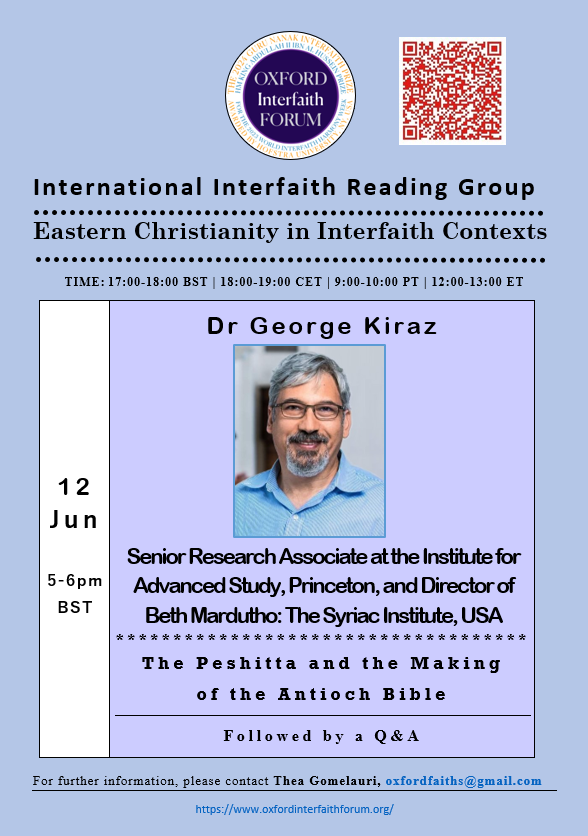
- Narsai’s Memra 49, on Adam and Eve: O Instructive Fault!
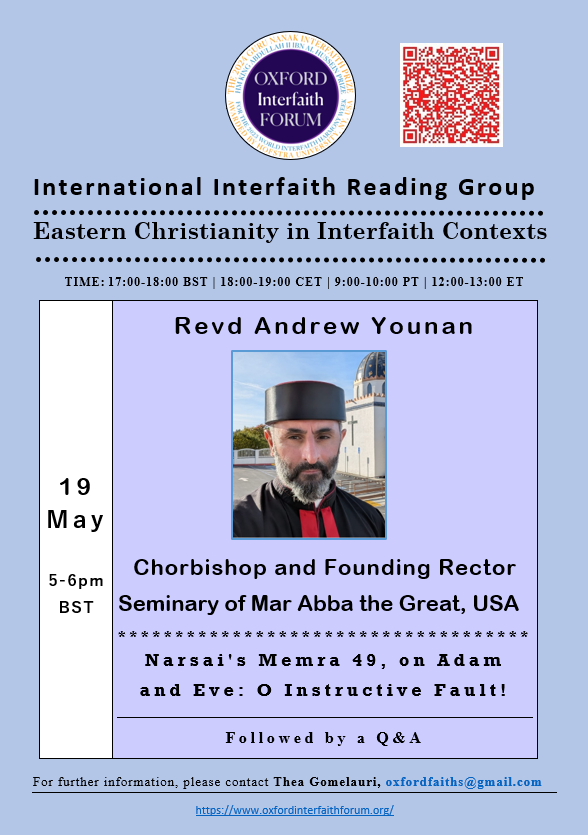
- Basil of Caesarea and Gregory of Nazianzus on the Problem with the Devil

- Byzantine Aristocrat, Monk, Mystic and Dissident: Symeon the New Theologian (949-1022)
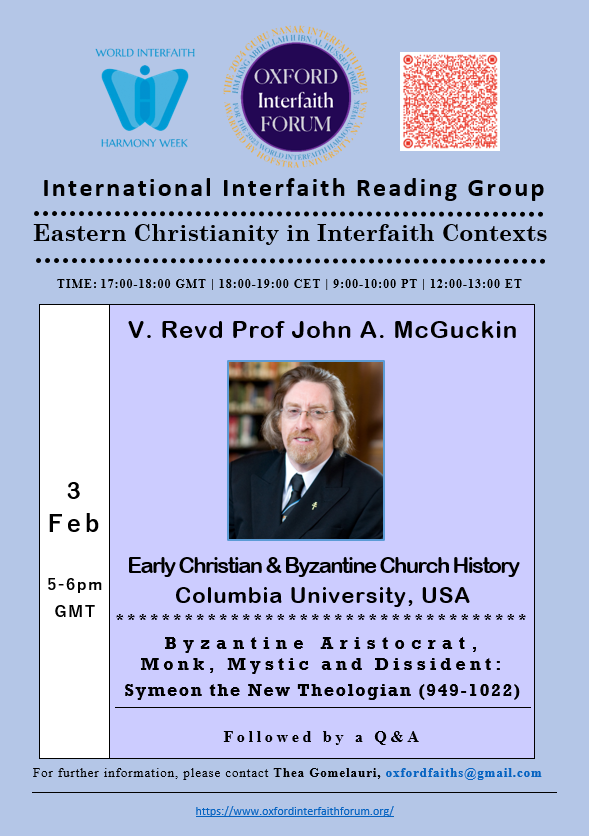
- Heavenly Hours: Creation and Time in the Syriac Testament of Adam
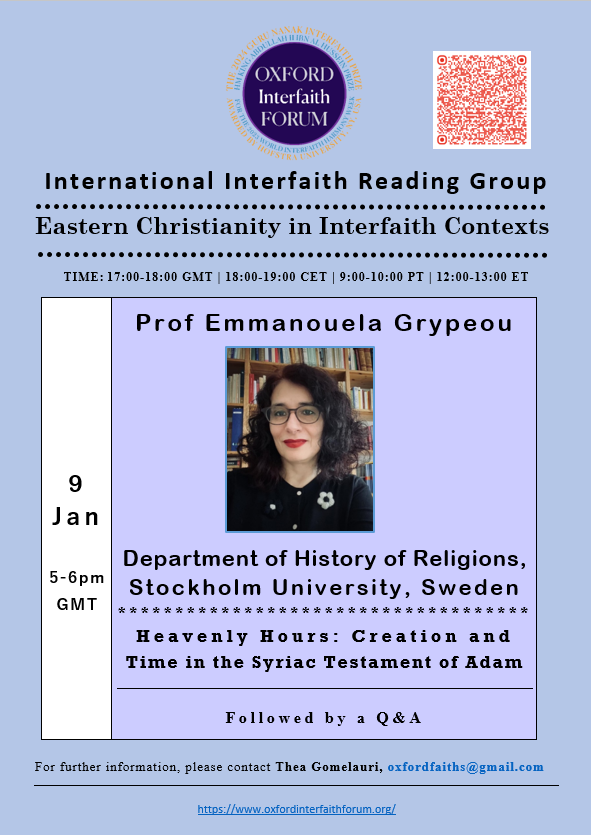
- The Monastic Homilies of Isaac of Antioch
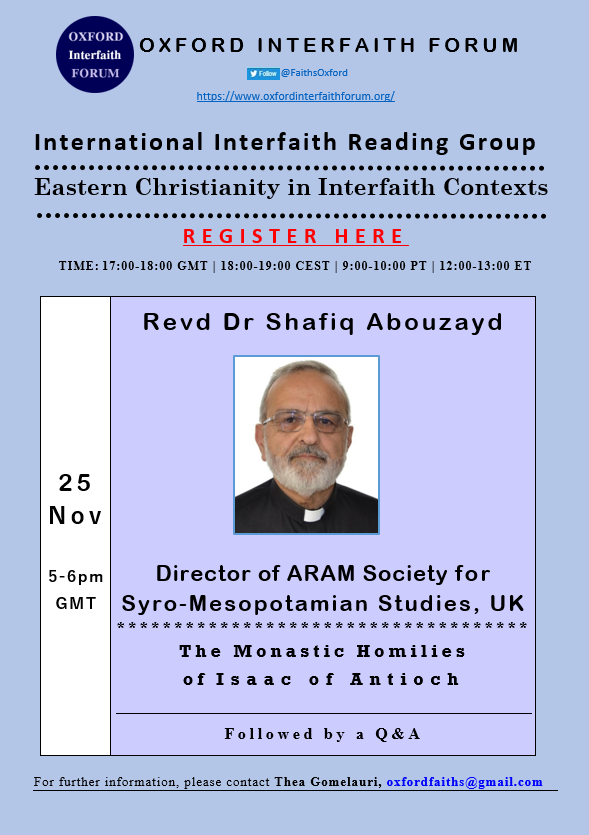
- Christian Trees

- Dialogue and Fire in a Fragmentary Syriac Martyrdom Narrative
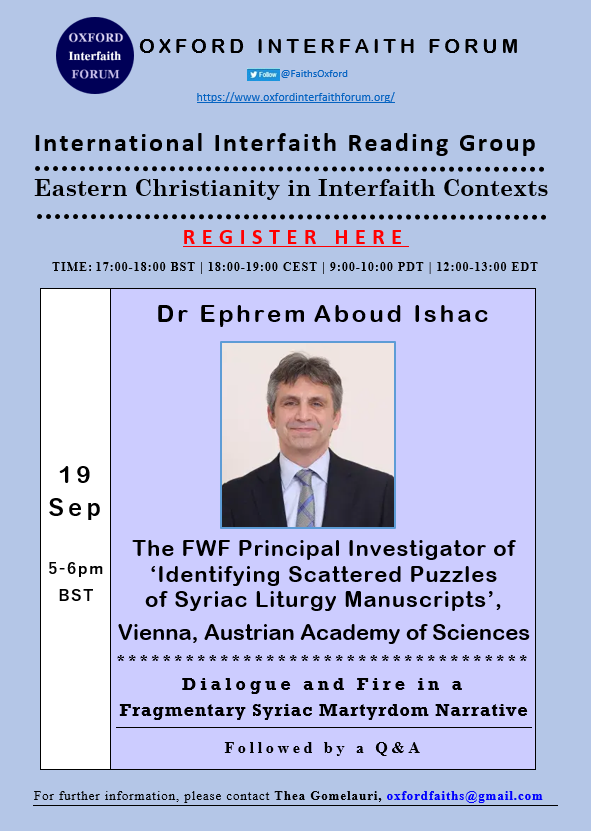
- The Origins of the First Anti-Jewish Good Friday Hymns

- Finding a Home: The West Syriac Context of the Clementine Epistles on Chastity
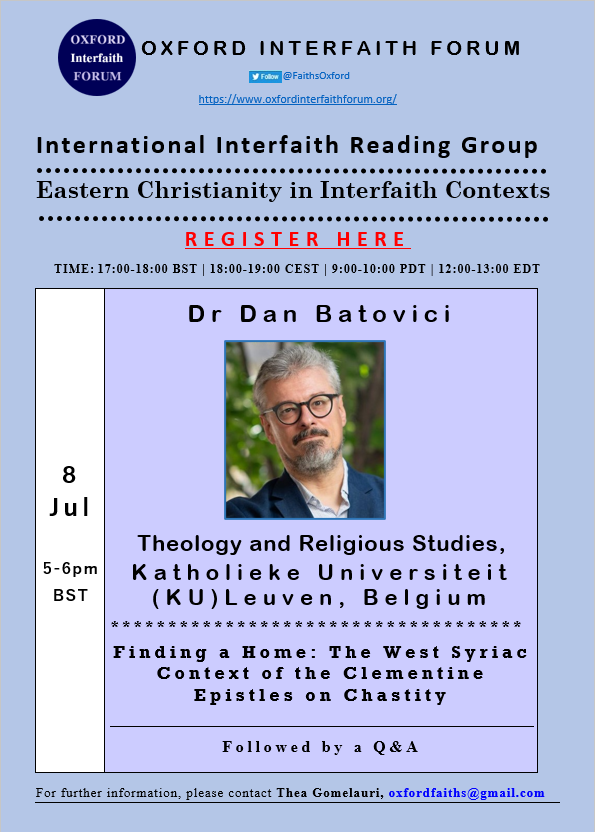
- Who was Mary, the Blessed Virgin and Mother of God? A Byzantine hagiographical narrative by the ninth-century Monk Epiphanios
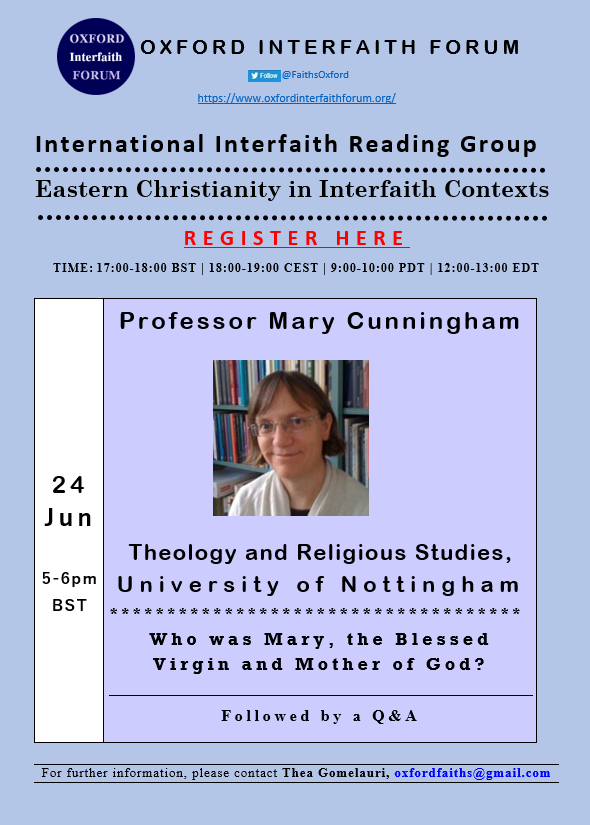
- Nikos Kazantzakis and Orthodox Christianity
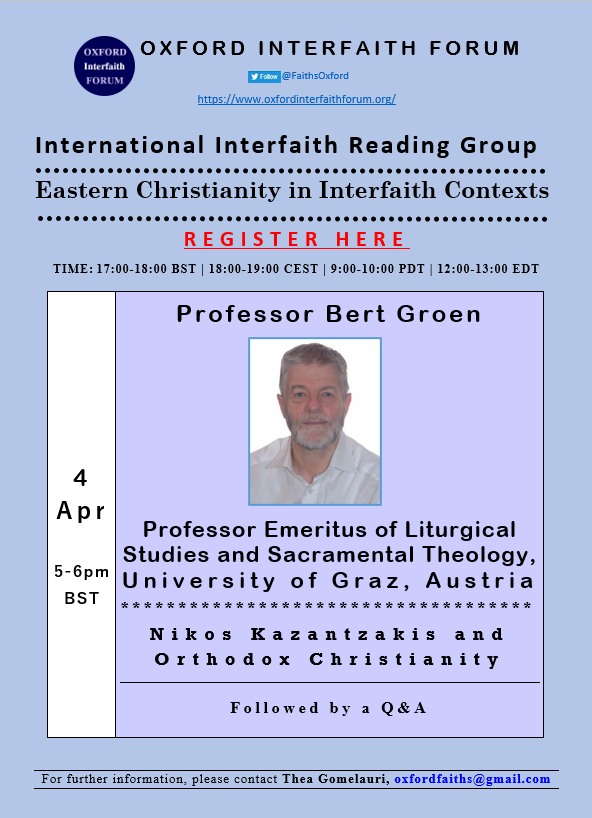
- The Miracle of Pilgrimage: A Coptic Journey to the Holy Land During the Ottoman Period
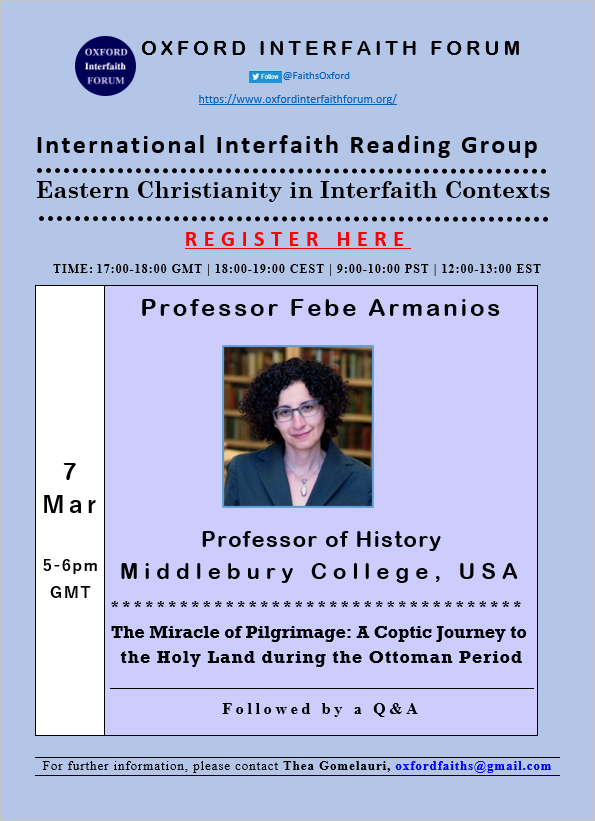
- Setting the Stage: The Rose of Performance in Studying Late Ancient Hymnody
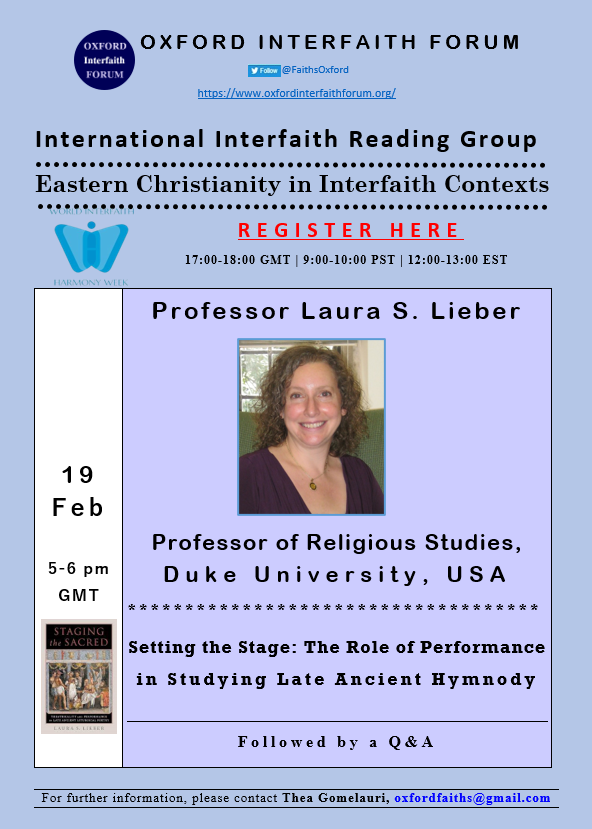
- Ephrem the Syrian and a New Beginning in Syriac Poetry
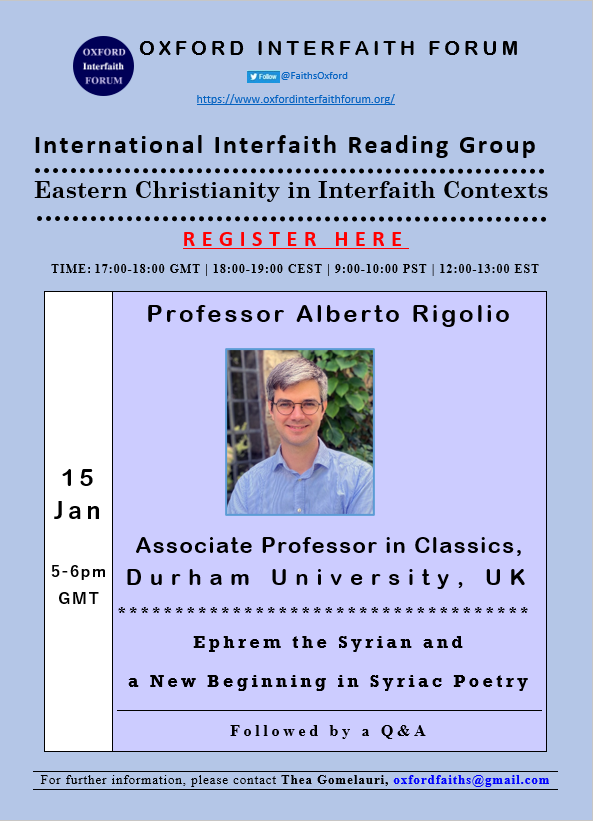
- A Jew Reads the Gospels in Syriac: Azariah de Rossi’s Critique of the Vulgate (1577)
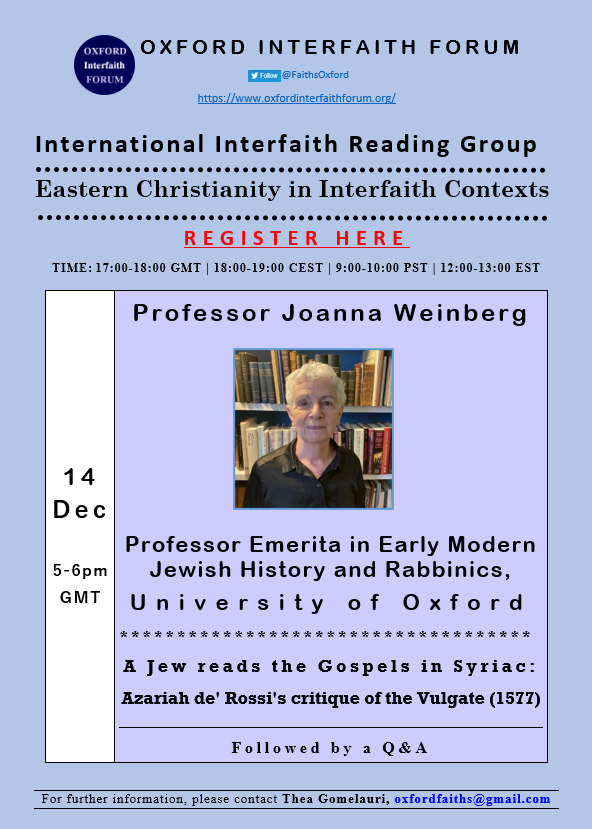
- The Manuscript Project at the Coptic Monastery of St Paul the Hermit at the Red Sea, Egypt

- Mary’s Ordeal: A Syriac Narrative Poem on Many and Joseph
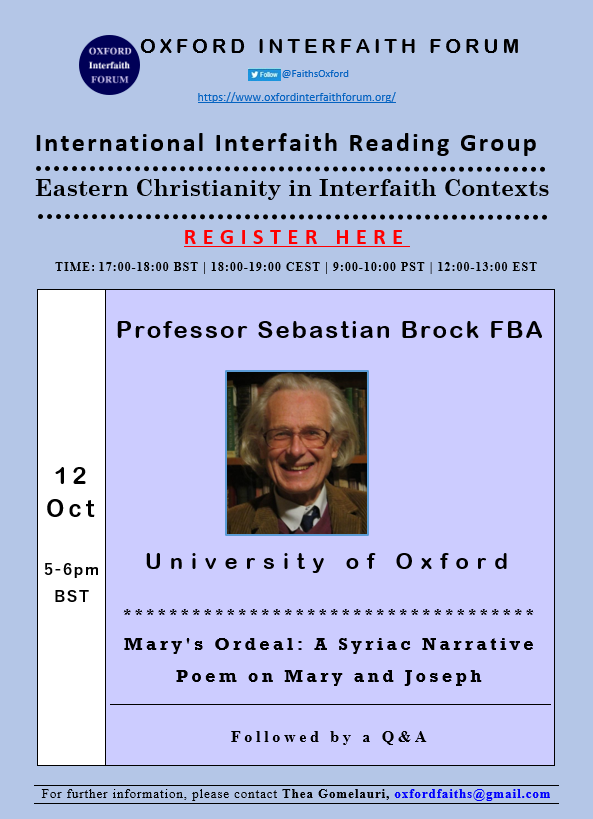
- Resurrection of the Human Body according to John of Dara’s Mimro I:4
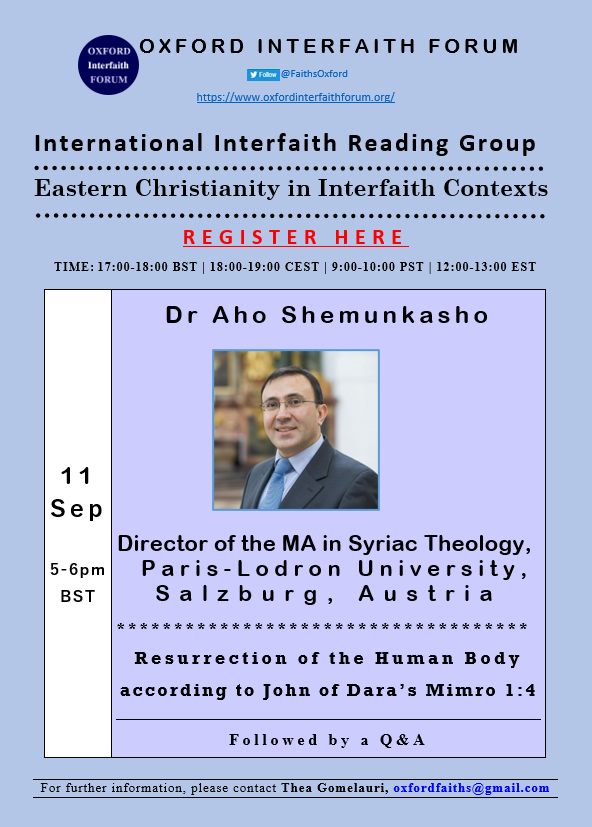
- Gregory of Nyssa: On the Human Image of God
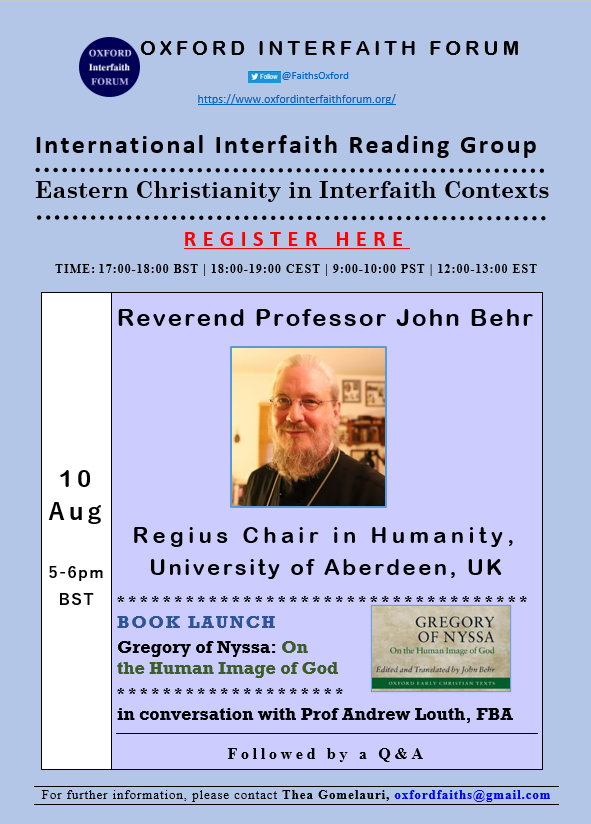
- ‘Conception by ear’ and Redemption of the Human Sensorium in Ephrem’s Thirty-fifth Madrasha on the Church
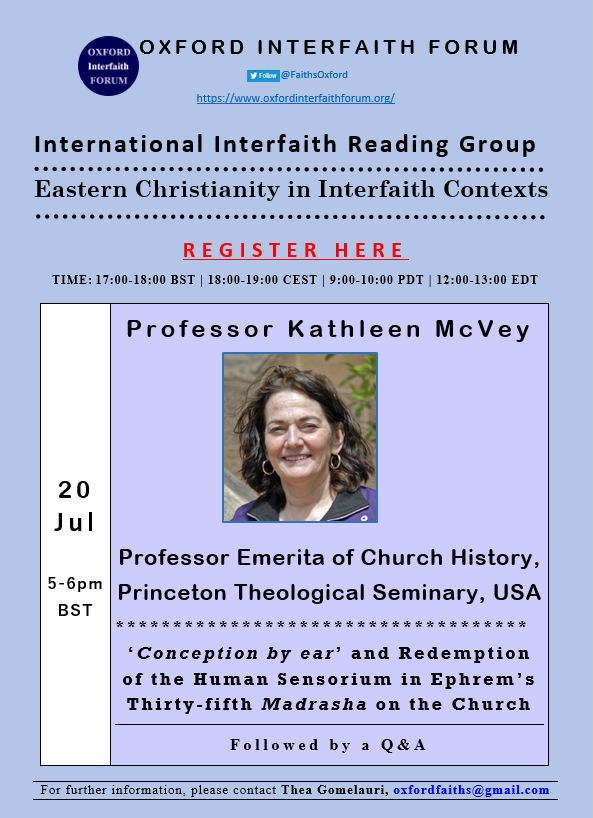
- From Edessa to South Arabia and Back: The Syriac Story of Bishop Paul and Priest John and Models of Sanctity in the Medieval Middle East
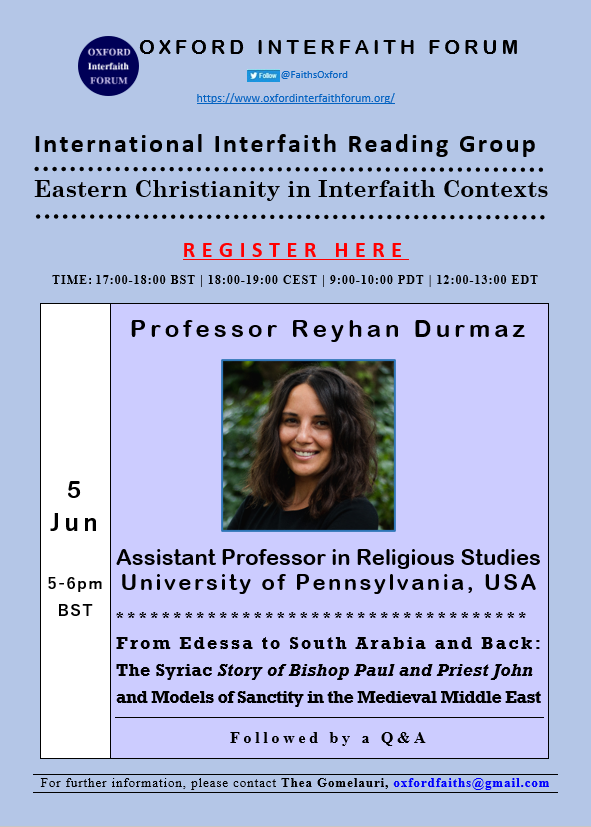
- Wrestling with Calculating-Thoughts: Mental Training according to Evagrius of Pontus
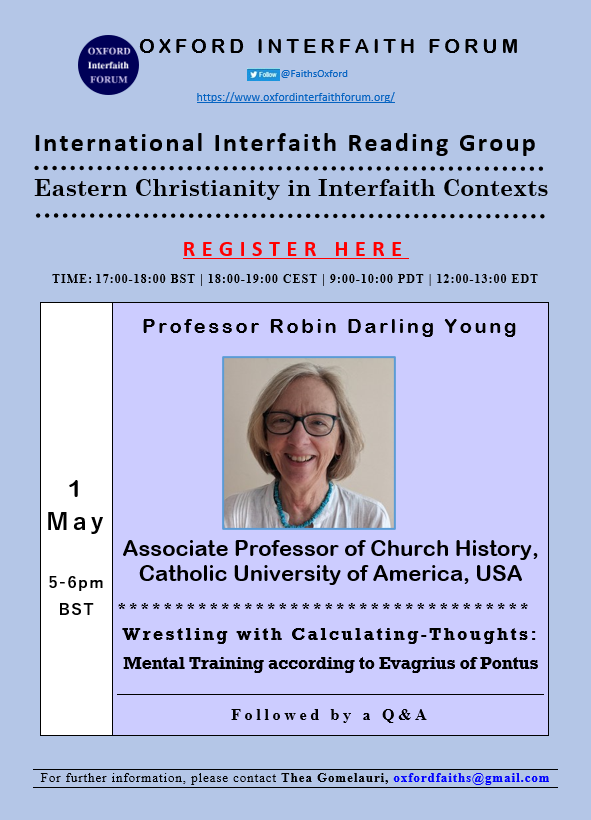
- Returning the Ticket: God and Evil in the Brothers Karamazov
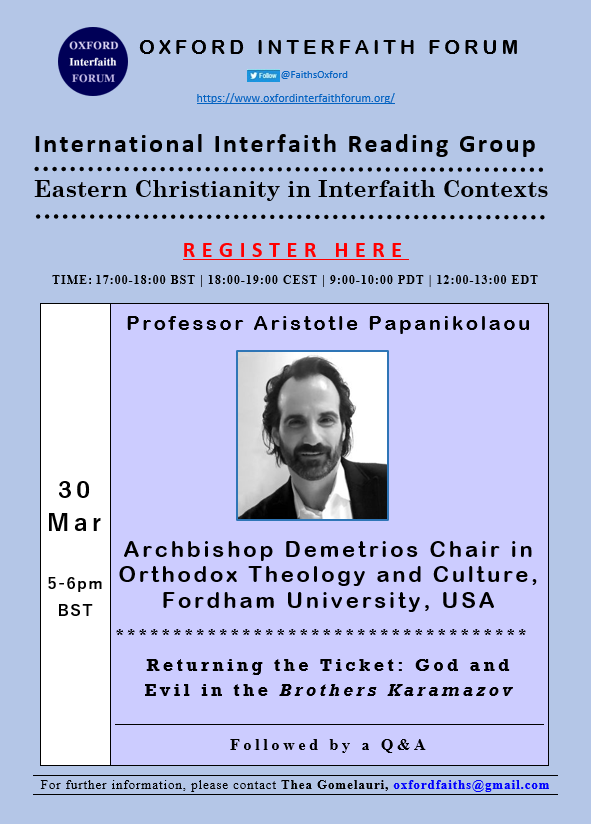
- Ecumenical Patriarch Athenagoras: an Orthodox Dialogue with Islam
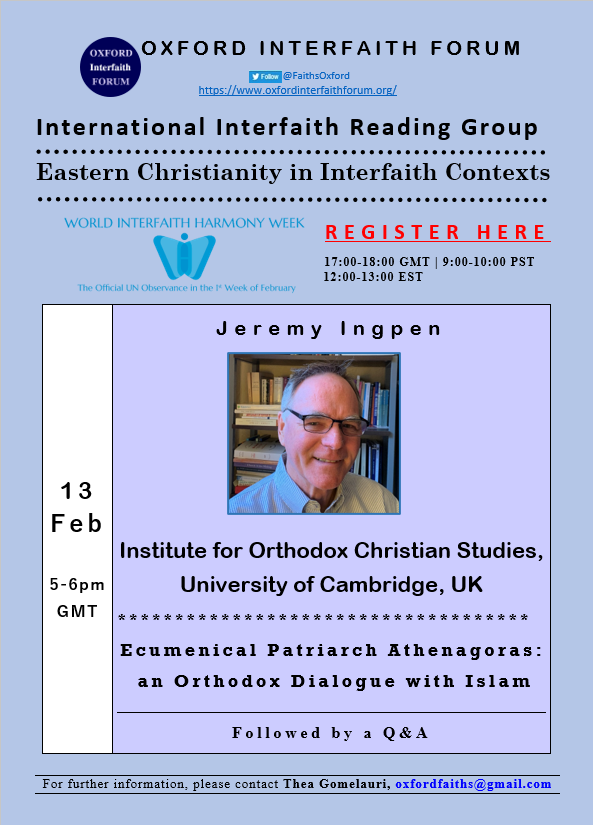
- Matta el-Meskin/Matthew the Poor: a ‘Contemporary Desert Father’ on Christian Unity
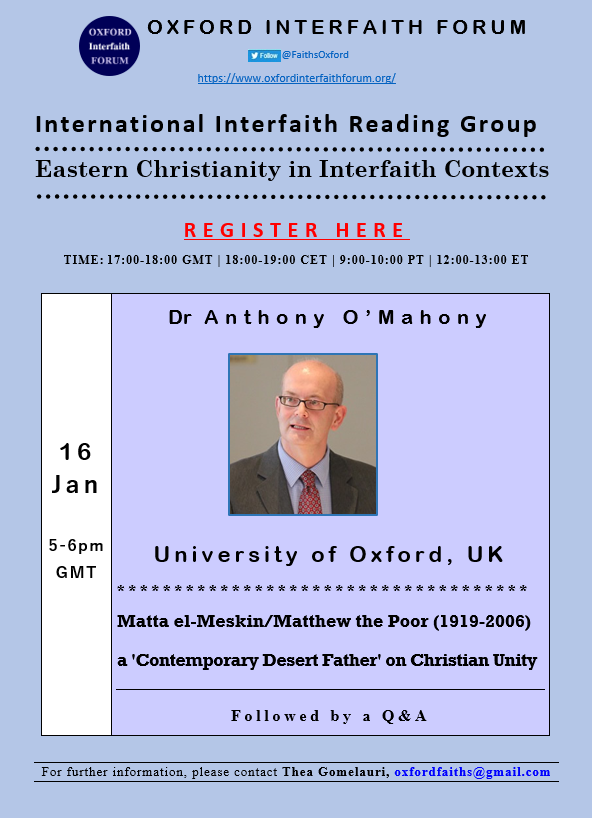
- Signs of Miraculousness: The Inimitability of Jacob of Serugh’s Teaching
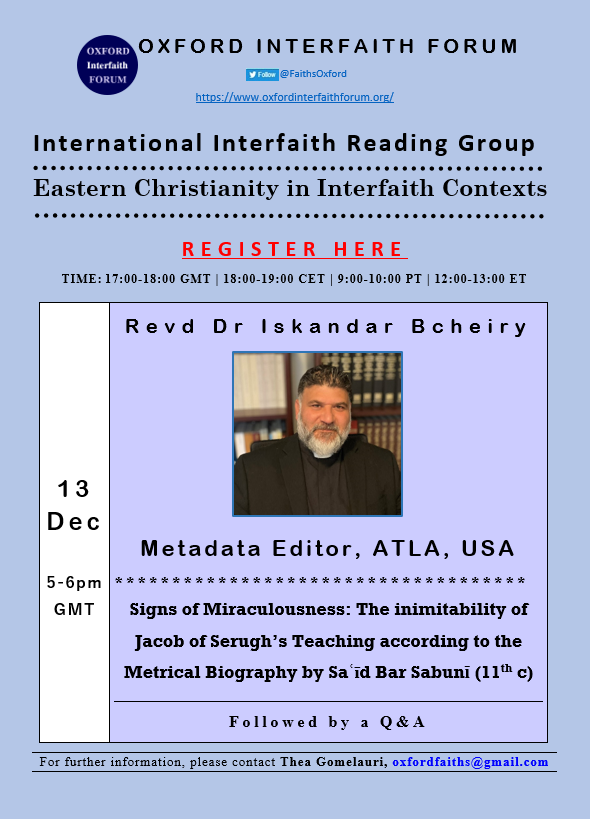
- Epistolary Style in Coptic Letters from the Late Third Century to the Early Fifth Century
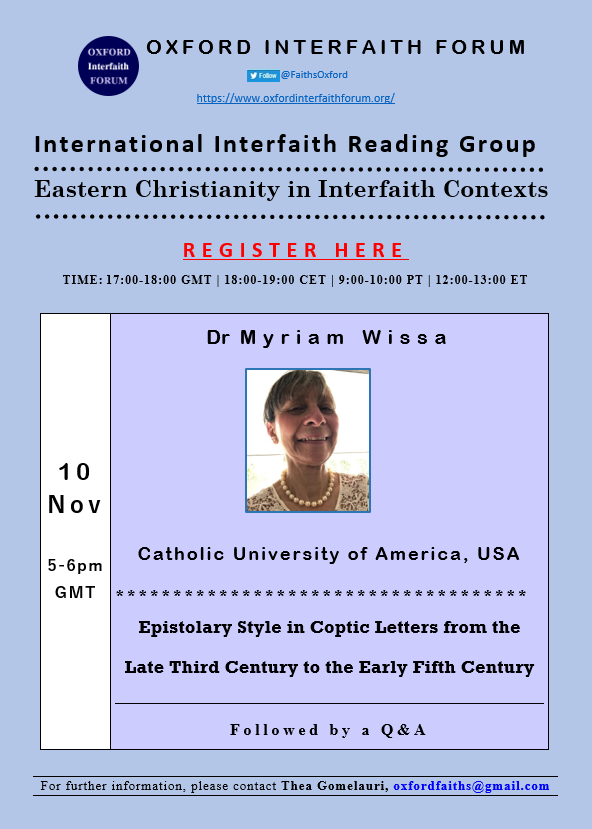
- Sarah and the Akedah: a Syriac Narrative Poem on Genesis 22

- The Paterik of the Kyivan Caves Monastery: Monk Polikarp in Discourse 14

- Jacob of Sarug on the Canaanite Woman (Mt 15:21-28, Mk 7:24-30): Biblical Storytelling and Models of Faith
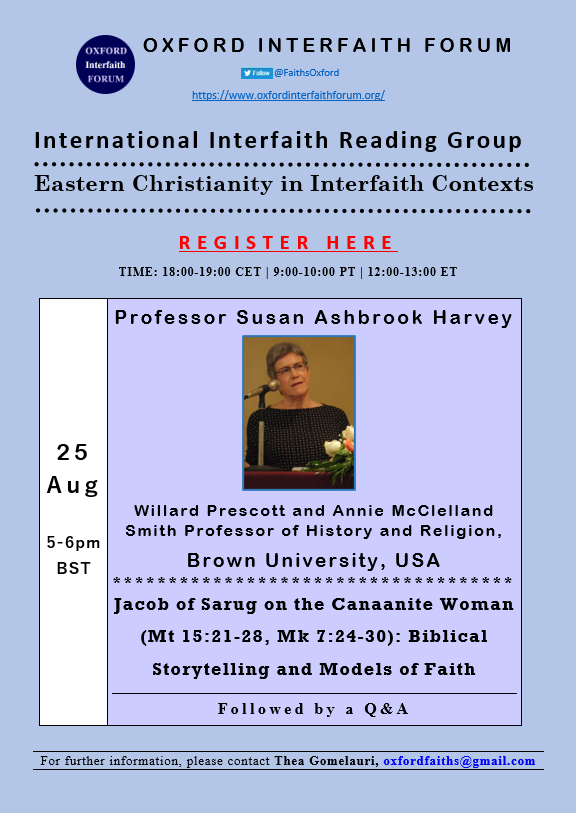
- Commemorating the saints at Turfan: Mart Shir and Mar Barshabba
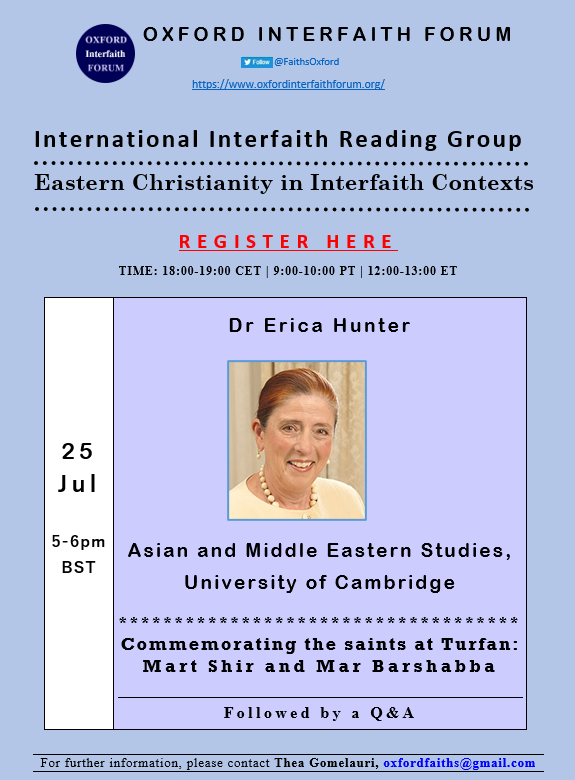
- The Opening Prayers of Saint Gregory of Narek’s Book of Lamentations
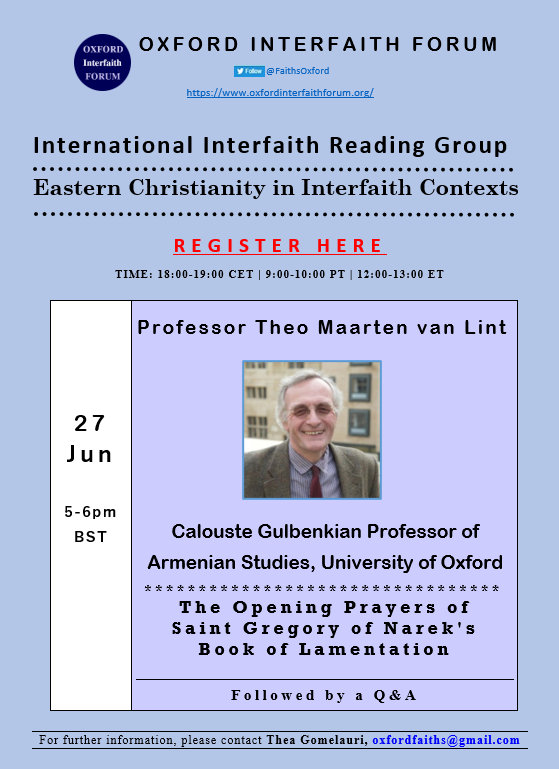
- Alexander Schmemann on Theotokos vis-à-vis Kali a Hindu Mother Goddess
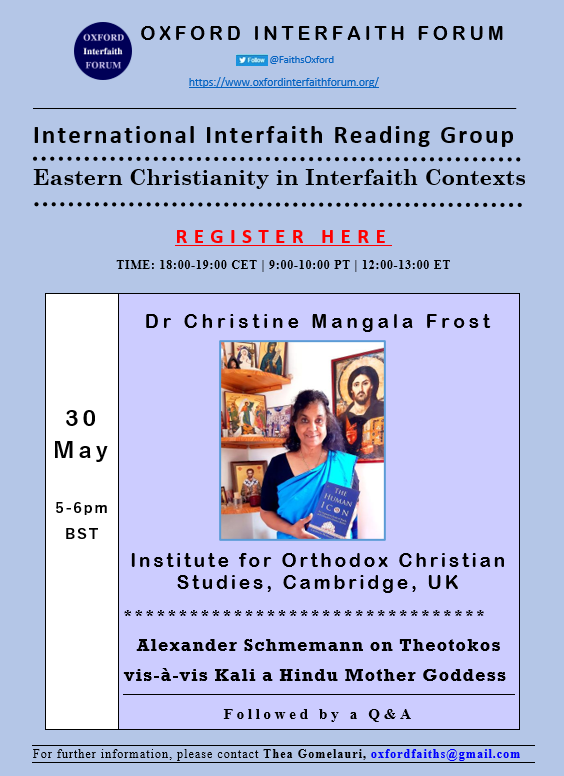
- Enoch and the Fallen Angels in the Ethiopian Tradition
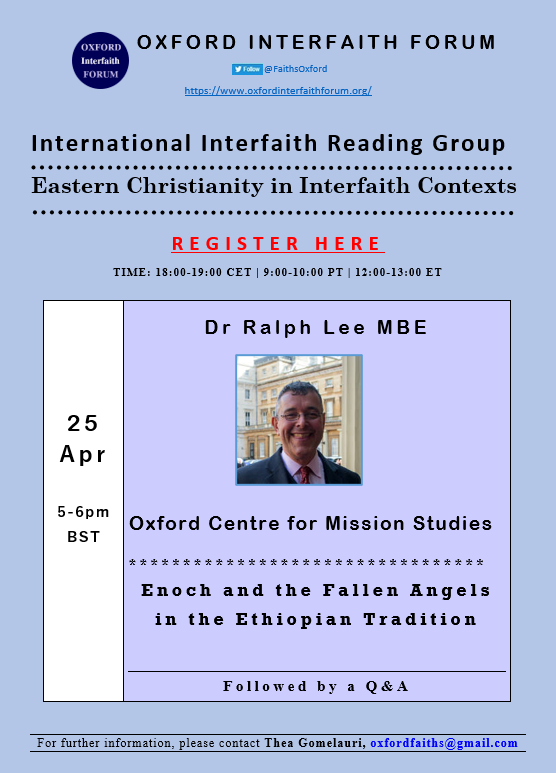
- Narsai on the Virgin Mary
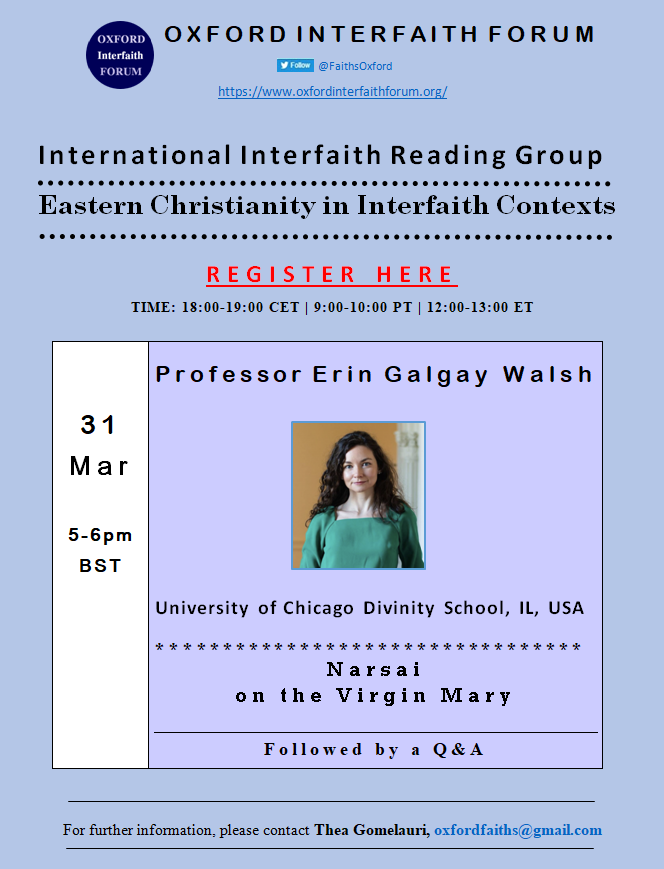
- An Anonymous Syriac Dialogue between Mary and the Angel

- Dadisho of Qatar: Questioning the Desert Fathers

- George the Athonite on Matters of Faith and Rite, According to the Life of St George the Hagiorite
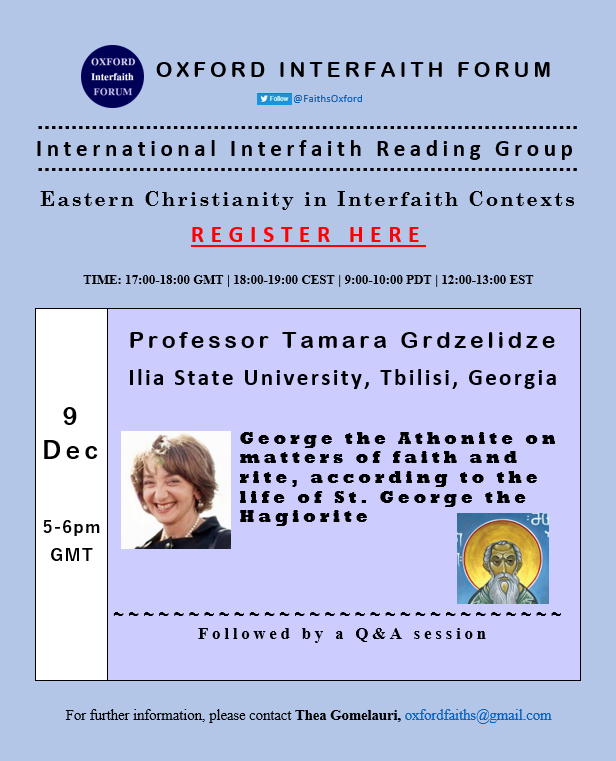
- Temple, Shekhinah and Prayer in Isaac of Nineveh’s III.VIII
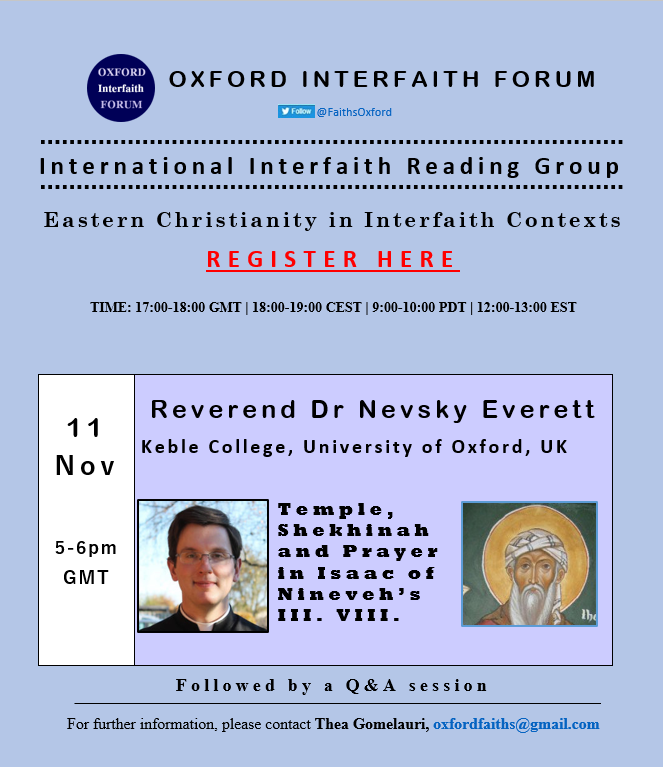
- St. Ephrem’s Commentary on Genesis Ch.3
